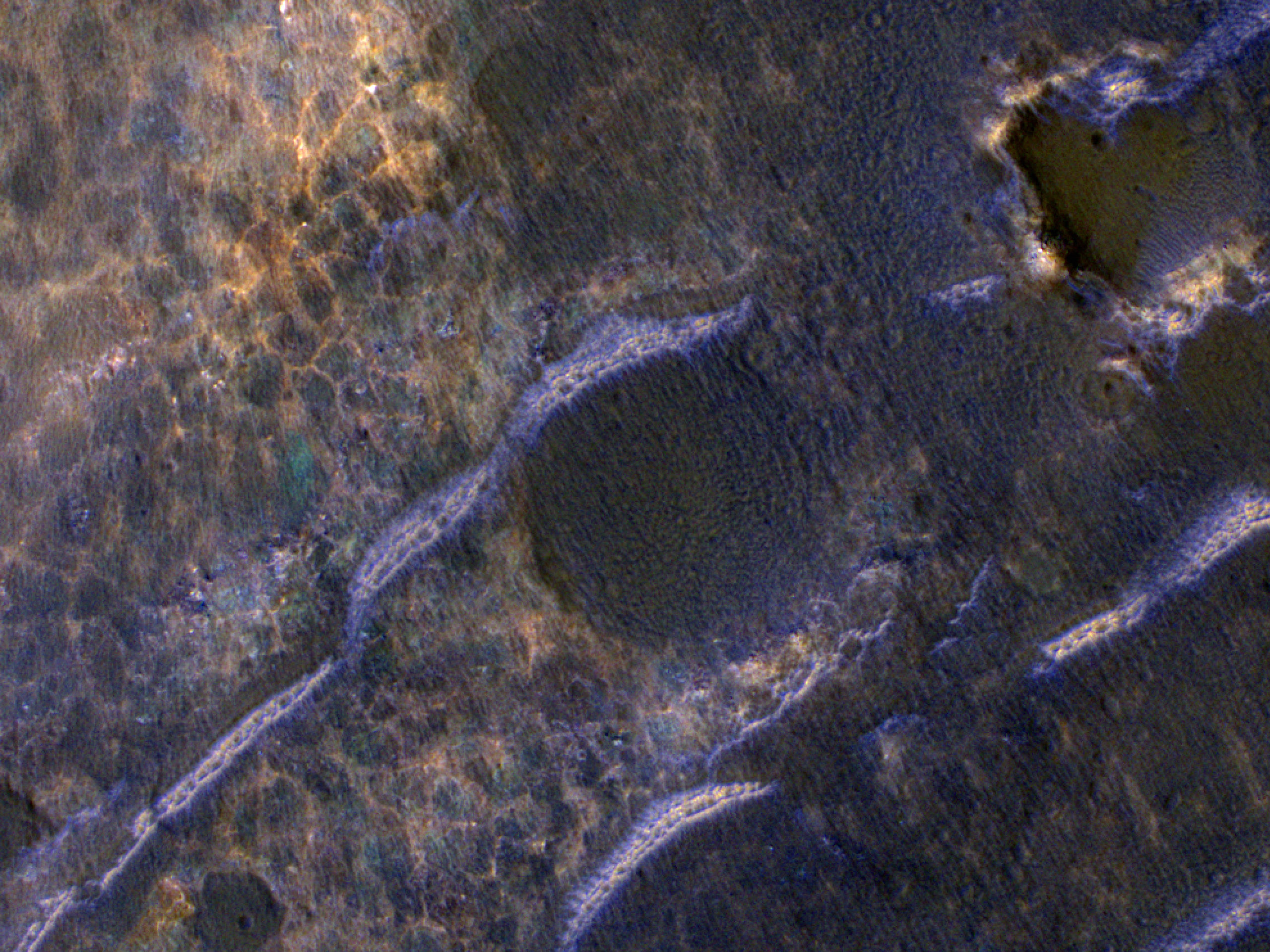Even seemingly unremarkable parts of Mars can appear complex and beautiful in HiRISE images! This image covers the plains southwest of Dawes Crater, a nearly 200-kilometer wide impact scar in the Terra Sabaea region of Mars’ ancient Southern highlands.
Scattered across the scene are many smaller, nearly circular depressions (likely younger impact craters) filled with dark materials, as well as lighter-toned ridges oriented from west/southwest to east/northeast; the latter are likely composed of wind-blown sand, but some small craters interrupt them too, suggesting that this sand has not moved recently.
In between the craters and sand cover, the bedrock here shows a range of colors, likely reflecting a range of rock compositions that were perhaps jumbled up by the Dawes and other nearby impacts that occurred over Martian history.
The enhanced color cutout, roughly half a kilometer wide, shows some green/blue blocks that may contain the igneous minerals pyroxene or olivine, and lighter orange-to-pink materials present especially within a network of polygonal outlines intermittently visible across the image. These lighter-toned materials may include secondary minerals, such as clays or salts, that formed within a network of cracks previously present in these rocks.
Although HiRISE had not actively targeted this location, we were able to ride along with another MRO instrument's observation of it, revealing exquisite details.
ID:
ESP_084041_1685date: 30 June 2024
altitude: 259 km
https://uahirise.org/hipod/ESP_084041_1685
NASA/JPL-Caltech/University of Arizona
#Mars #science #NASA
